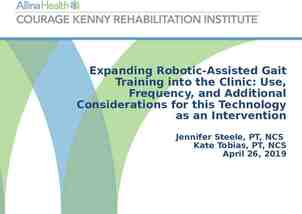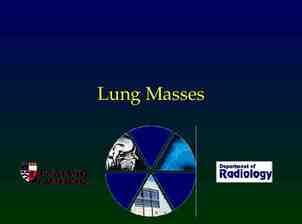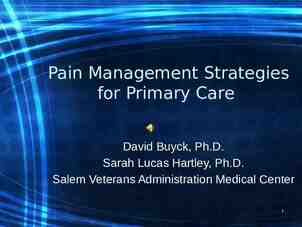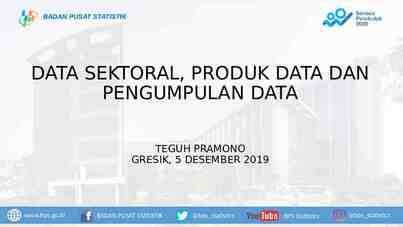Applying Critical Thinking to Test Taking Presented By: Monica
8 Slides312.59 KB
Applying Critical Thinking to Test Taking Presented By: Monica Bonatt and Nichole daFonseca
Critical Thinking The practice of nursing requires application of knowledge, skills , and abilities. Questions on your exams are written in a way that requires a more complex thought process than Semester 1. Identifying problems, issues and risks Problem-solving Prevention Developing & implementing Plans Monitoring Progress/Evaluating Outcomes Improving process
NURSING PROCESS: ADPIE Assessment: Gather Info, Ask questions REMEMBER both SUBJECTIVE and OBJECTIVE. Diagnosis: Identify the problems, prioritize the problems, identify nursing diagnosis Plan Develop goals and desired outcomes, prioritization of the problem, action plan Implementation/Intervention: Perform nursing action, educate the patient, experiment, organize and manage patient care Evaluation: Analyze , document patients response to implementation/intervention, and analyse patients signs and symptoms of issue
Breaking Down the Questions Know what type of question you are looking at. Negative Style: Asks a question regarding what is false. Negative Style questions tend to be the ones that trip people up more often and this is due to NOT READING THE WHOLE QUESTION CAREFULLY. How to Identify? Key Words to look out for: NEVER, EXCEPT, AVOID, CONTRAINDICATED. SELECT ALL THAT APPLY Tend to always be on things that you can memorize. Typically, we see SATA questions about signs and symptoms, risk factors, side effects , labs or patient education.
Prioritization Evaluate and make decisions about your care , environment, patient safety and your priorities for care. EXAMPLE: After receiving a report from the night nurse, which of the following clients should the nurse see FIRST? A 31-year-old woman refusing sucralfate before breakfast A 40-year-old man with left-sided weakness asking for assistance to the commode A 52-year-old woman complaining of chills who is scheduled for a cholecystectomy A 65-year-old man with a nasogastric tube who had a bowel resection yesterday Illness and disease Knowledge based on the illness or disease being questioned A client tells the nurse that she is allergic to eggs, dogs, rabbits, and chicken feathers. Which order should the nurse question? TB skin test
Diagnosis Knowing what symptoms point to larger ailments is an essential part of nursing Which of these assessment findings should the healthcare provider expect to identify as an early clinical characteristic of multiple sclerosis (MS)? Vision loss Dementia Muscle atrophy Clonus Treatment plans and Patient Communication As nurses we spend a lot of time with the patient , and part of our job is instructing patients on how to go on with their lives after they leave our care. Which interventions are most likely to promote maximum self-care for a patient recovering from a stroke? Select all that apply. Encourage participation in activities of daily living. Educate patient on risks of repeat stroke. Assess neurological function every shift. Assist patient to track motor function and mobility levels. Provide adaptive equipment as indicated.
Safety and Care Environment SAFTEY is CRUCIAL The physician orders tobramycin sulfate 3 mg/kg IV every 8 hours for a 3-year-old boy. The nurse enters the client’s room to administer the medication and discovers that the boy does not have an identification bracelet. Which of the following should the nurse do? Ask the parents at the child’s bedside to state their child’s name. Ask the child to say his first and last name. Have a coworker identify the child before giving the medication. Hold the medication until an identification bracelet can be obtained. Interpreting Information Being able to take data given and correctly determine what is going on with your patient. The results of an adult patient’s blood pressure screening on three occasions are 120/80 mmHg, 130/76 mmHg, and 118/86 mmHg. How will the healthcare provider interpret this information? Normal blood pressure Hypertension Stage 2 Hypertension Stage 1
BREAKING DOWN THE QUESTION 1. Read the whole question , including the answers 2. Go back to the question and determine , WHAT IS REALLY BEING ASKED OF ME? 3. Determine what step in the nursing process is this? 4. Look at the answers to see which answer selection matches BEST with what the question is truly asking













